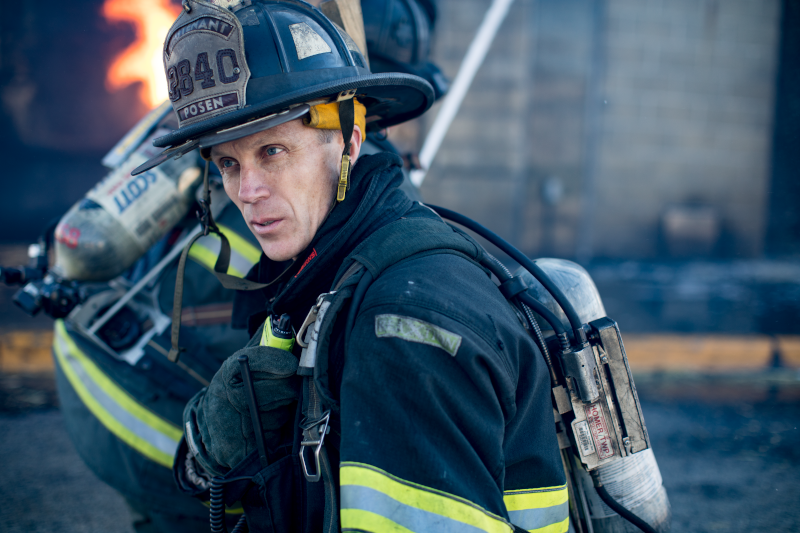Emergency responders – such as police and fire- require reliable radio communications in buildings. When first responders have poor communication, lives can be lost or put at risk. P25 public safety radios must perform reliably in all areas of a commercial or residential building—from the basement to the penthouse; from below-ground parking garages to rooftops; and everywhere in between.
The construction of modern buildings are built to be energy efficient, keeping the heat in and cold out. The use of innovative, high-tech construction materials for the exterior of buildings has caused additional radio coverage challenges, making it difficult, and at times impossible, for emergency radio communications to reach dispatch or incident managers. Without proper coverage, first responders could be delayed or even prevented from communicating with one another during an emergency situation, which could lead to severe consequences.
Public safety agencies are challenged to address the ever-increasing need for inbuilding coverage. This challenge is exacerbated by the fact that many of these areas are densely populated, and therefore have a large number of people who will be impacted when an emergency occurs. Public Safety agencies in Maryland, Washington DC, Pennsylvania, Virginia, and New Jersey must ensure that they can provide adequate service to all their citizens, even those within buildings or other structures where radio signals cannot penetrate.
Bi-Directional Amplifiers (BDA) and Distributed Antenna Systems (DAS)
First Responders need to have access to instant communication. Seconds could mean the difference between life or death. Your building needs a wireless coverage solution that allows first responders to use their two-way radios throughout the building. You can do this through the installation of bi-directional amplifiers (BDA) and distributed antenna systems (DAS) throughout office buildings, hospitals, schools, sports stadiums, casinos, and more places where public safety radio communication is critical.
BDA & DAS systems work by improving public safety radio signals in buildings from existing P25 radio communication systems used by first responders. This means firefighters can stay connected while fighting fires or responding to emergency calls. Police officers will be able to keep track of an emergency situation, so they are aware of any potential dangers to the public and themselves. A first responder’s ability to communicate during an emergency is paramount. Stronger radio signals, means better communications and better outcomes for emergency responders. Many municipalities have building codes requirements specifying addressing the requirement of BDA and DAS installations and certifications.
The National Fire Protection Association (NFPA) and the International Fire Code (IFC) both have addressed requirements for in building coverage. NFPA code 72 chapter 24 states that 90% of in-building coverage is required. However, the requisite jumps to 99% for critical areas such as elevator lobbies, exit stairs and passageways, and fire pump rooms. Additionally, IFC-510 code requires 95% in-building wireless signal coverage with a minimum signal strength of -95 dB. All public safety communication BDA/DAS systems also need to work under high heat and humidity while being able to function on battery power for 24 hours.
700 MHZ Public Safety Spectrum
Public safety agencies need to be able to work together during an emergency. Although this is imperative, first responders do face challenges communicating with different departments. The FCC has solved this issue by allocating the 700MHz frequency range for Public Safety radio systems. By reserving this frequency for Public Safety Radio systems, it helps with police, fire and EMS agency coordination. Now these departments can communicate together on a scene and work collaboratively. Additionally, the 700MHz spectrum was selected because it has excellent inbuilding penetration, however with modern construction, signal penetration has become more challenging. To ensure your safety, the safety of your first responders, and to certify your building is up to code, Wireless can help assess your building’s coverage, and design a system that works best for first responders.
Implementation
Choosing the right technology partner for your BDA and DAS system implementation can be a daunting task. Our goal at Wireless is to work collaboratively by providing unbiased information that will help you find the best solution for your project needs. The experts at Wireless will work with you every step of the way- from design to maintenance. We will be responsible for:
- Design & Engineering: When you partner with Wireless for your public safety BDA and DAS system, you know you’ve made the right choice. Our team of engineers are factory trained experts with up-to-date certifications. We will also assist with coverage maps, site walk throughs, building plans reviews and selecting installation sites.
- Equipment Selection- We’ll help you select the right equipment for your building. We have a number of options for BDA and DAS systems, so we will recommend the solution that will meet both coverage goals as well as local building code requirements.
- Installation and Maintenance – We will ensure maximized coverage by optimizing placement of your components. After installation is complete, we will develop an ongoing maintenance schedule to deliver maximum performance for years without service interruption. Wireless can also certify ongoing compliance with local codes.
Reliable Communications
Public safety agencies in the Mid-Atlantic states require reliable radio communication coverage to keep communities safe. Our expertise in designing BDA & DAS systems has made us one of the most trusted names in public safety communications today. We can help you design your system using only the best equipment from industry leaders. With Wireless as your trusted technology partner, we can help you achieve compliance with local codes and peace of mind knowing that public safety agencies will have instant, reliable communications to keep everyone safe. Contact us today for your free consultation.

